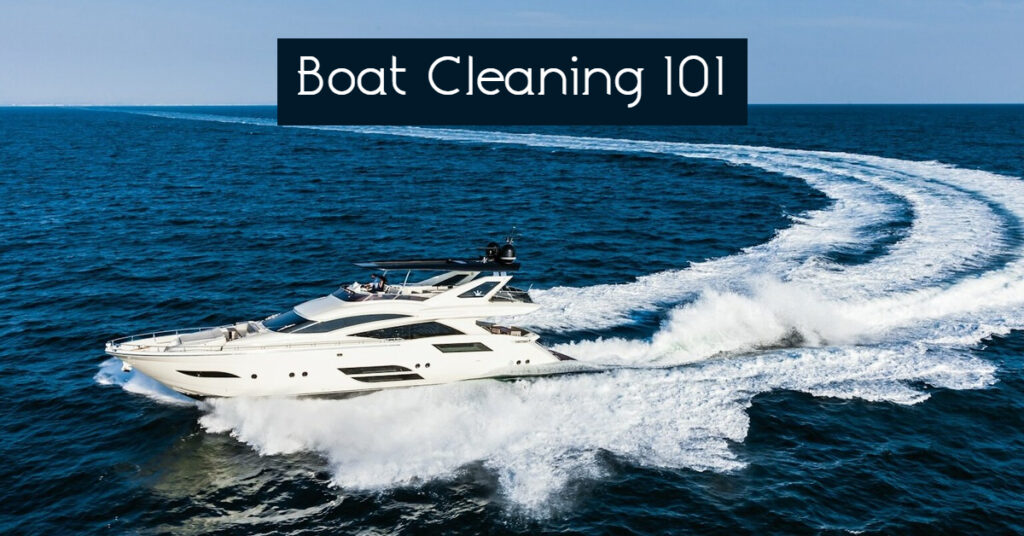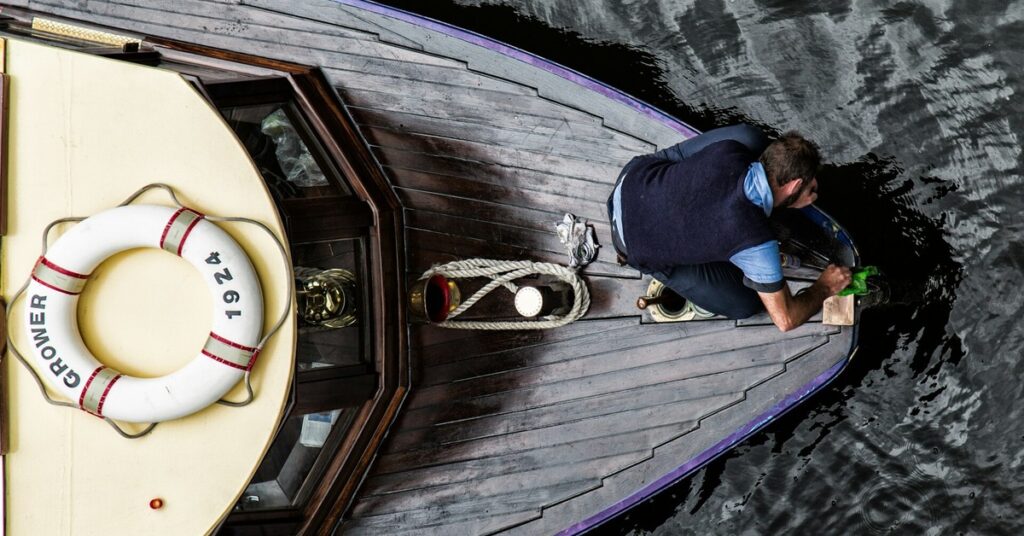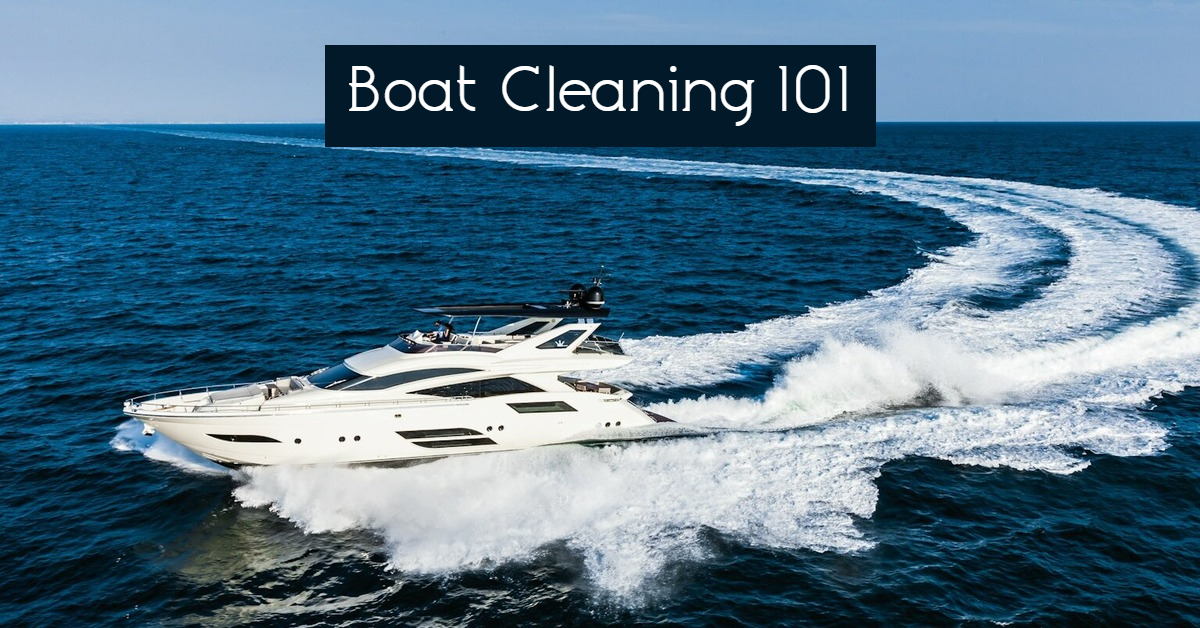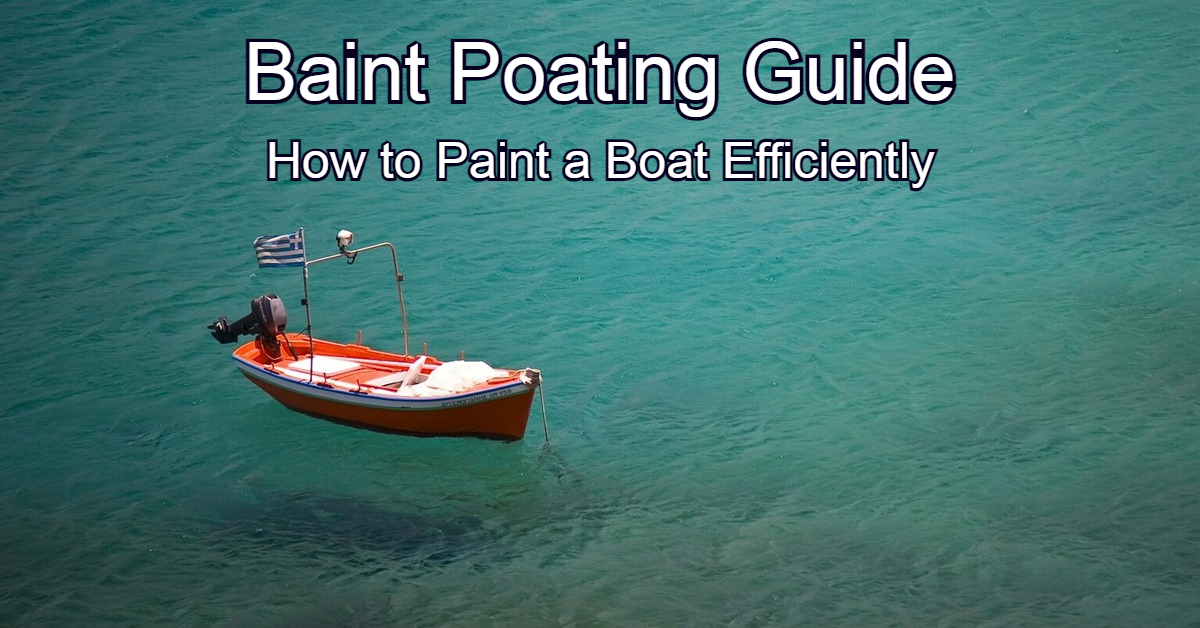A ship can have the best engine and gear in the world, but people will likely notice how dirty it looks first. Boat cleaning is an underrated part of maintaining a water vessel. It can heavily influence how the exterior looks, how secure the inner workings are and much more.
The process and general cleaning practices can change depending on the vessel type. However, they all aim to keep it in pristine condition.

The Importance of Keeping Clean Vessels
Two main reasons behind boat cleaning are to keep it presentable and functional. In terms of appearance, a ship can look low quality when it has a dirty film. Boats are often seen as a symbol of power and status — thus, keeping them untainted can give off an impression to fellow enthusiasts.
In terms of practicality, a clean vessel ensures it can keep traveling on water without a hitch. Accumulated dirt like algae and barnacles can add weight that slows down a boat. The shift can also cost boat owners more fuel in the long run.
Cleaning is also necessary to comply with the Clean Boating Act. According to the Environmental Protection Agency, owners and operators should implement management practices to regulate their vessel’s discharge and mitigate its impacts. Dirty boats can degrade water quality and disrupt marine life.
How Cleaning Practices Differ From Boat to Cruises
Before discussing boat cleaning, it’s important to examine practices for different kinds of boats. Personal and commercial ships will each have their own specific requirements and priorities.
Fishing Boats
Simple fishing boats are essential vessels for transporting anglers to a water source. As they cast and catch all kinds of animals, owners of this type of watercraft should focus on being as hygienic as possible. Frequent use and exposure to freshwater don’t cause as much concern as saltwater since it’s less abrasive and, by proxy, simpler to clean.
Luxury Yacht
Luxury yachts are more elaborate than fishing boats. Some models are created primarily for sailing against other boats. In those cases, most cleaning principles revolve around the exterior to achieve a faster speed.
Outside that, luxury yachts are created to enjoy the natural beauty of the world’s waterways. As such, enthusiasts with this watercraft recommend green boating practices. For example, use biodegradable cleaning products to lessen emissions in the long run.
Cruise Ships
Commercial ships such as cruise boats are among the biggest vessels in the marine industry. Consider the Icon of the Seas, which features around 20 decks and carries 7,600 passengers and 2,350 crew members at maximum capacity. There’s plenty of ground to cover when cleaning boats as big as those, so efficiency is key.
Cruise ships also have to consider the number of people onboard. Compared to fishing boats and luxury yachts, more individuals are present and mingling with one another. A clean environment is necessary to avoid the transmission of different sicknesses. It also contributes to the comfort and luxury cruise lines pride themselves on.
Considerations for Boat Cleaning Products
Boat cleaning products are key ingredients in restoring ships to their pristine condition. But with so many items on the market, being conscious is vital. Make the following considerations when shopping for tools and solutions.
Have a List of Essentials
The main trinity any boat enthusiast needs to clean their vessel is detergents, wax and brushes. Detergents work as abrasive solutions to remove dirt and grime from a boat’s materials. The wax acts as a sealant to polish and protect the cleanliness.
A strong brush is recommended for boat cleaning tools. Make sure to pick out a variation that works with a vessel’s materials. Harder bristles are ideal for wooden surfaces, but fiberglass boats can benefit from gentler brushes like nylon.
Scrapers and power washers are also ideal to remove any marine growth sticking to the underbelly. For the interior, a mop and some soft sponges are good. A microfiber cloth is great for quick wipe-ups and hand-drying.
Check the Solution’s Base
While all cleaners are advertised for boaters, their bases can still vary. Solvent-based cleaners rely on chemicals like oxalic acid to accomplish sanitation.
Not all water-based cleaners are the same. Those on the acidic side of the pH scale are scored from zero to seven, which is ideal for removing mineral stains on the boat. Variations on the alkaline side are graded seven to 14 and can be used for dissolving chemical compounds.
Consider the Instructions
Boat cleaning can take plenty of time, but some products make the process easier. For instance, rust can accumulate on cabling. Certain rust converters work fast to turn the corrosion into protection.
In contrast, other boat cleaning products may need to sit before removal. For example, certain polishes have a long drying time after application. While it can lengthen the process, the finish is worth it for some people, so check schedules to confirm any tight timelines.

General Boat Cleaning Process
After getting the supplies, jump into the cleaning process. Ships may have different ways to get the job done, but these steps give an overview of what to expect.
Remove Marine Growth
Most boats should be hauled to land to clean the bottom first. Algae and barnacles are notorious for sticking to the hull — scrape them off while the surface is still wet for easier removal. A power washer can also be helpful in removing marine life.
For bigger ships, most boat owners will have expert cleaners do some underwater cleaning. The maintenance will typically require vessels be brought into a dry dock where professionals will thoroughly inspect and clear it for deep cleaning.
Scrub and Clean All Areas
Detergent is applied to the deck and other interior surfaces with a stiff brush. After the initial scrub-down, everything is rinsed thoroughly to prepare for wax, if necessary. Carpeted areas are cleaned with a wet vacuum and dried down afterward.
The same process works for the hull and exterior. Detergent is applied for gentle buffing and rinsed after. Deep cleaning will require a more abrasive cleaner and technique to remove dirt and slime.
Dispose of Debris Properly
Trash tends to pile up on board while traveling on water. Regular waste is dangerous to dump in the oceans. To protect the marine ecosystem, garbage accumulates and is properly disposed of when arriving on land.
That said, the U.S. permits sewage dumps 3 miles from shore if the waste is treated. Food waste is also approved. Cruise ships process these excesses as food for fish, but this is highly discouraged, as some contain chemicals toxic to ocean wildlife.
Sanitize the Whole Space
Focus on sanitation. Large vessels accommodate many people, so the surfaces must be as hygienic as possible. Decorative pillows, blankets and seats should go to the laundry when possible. Disinfectant wipes and sprays should also be used on the interior spaces of the watercraft.
Tips for Boat Cleaning
Knowing how ships are cleaned is useful information for the future. These additional tips can further knowledge about boat cleaning, especially for first-timers maintaining their vessels.
Prioritize the Hull
A well-maintained hull can improve the boat’s speed and save on fuel consumption. As the base of the watercraft, it also faces plenty of water pressure. Cleaning the area is a great maintenance step for spotting problems with the boat.
Don’t Forget the Engine and Rigging
The engine needs to keep running for the boat to keep sailing. The rigging also requires maintenance since it supports sailing navigation. Clean these components to keep them working long term and rust-free. Doing so also improves the accuracy and speed when sailing in a specific direction.
Show the Bumpers Some Love
Docking a boat entails resting the watercraft on a cushion. Unbeknownst to some boating enthusiasts, the bumpers also need some cleaning.
Steer clear of harsh chemicals, as they can damage the surface of the fender. Mild cleaners are ideal for getting dirt and grime off the surfaces. Use warm water to kill any lingering germs.
Be Mindful for Fresh Paint
Cleaning a vessel is a delicate process if it’s newly painted. Boat owners should avoid pressure washing it at all costs, waiting for everything to dry down instead.
Add wax and allow it to set as well. Wait a couple of days before gently wiping the surfaces down.
Pay Extra Attention to the Floor
No boat owner wants themselves or others to slip and fall off the boat. Be attentive to the floor when cleaning to remove any slickness. Carpeting is harder to clean, but these dry surfaces can prevent slippery incidents.
Be Consistent with Cleaning
Be consistent with cleaning, especially when a boat is frequently used. Certain amenities like portable toilets need to be emptied regularly for maintenance. The interior should also be tidied up and sanitized a least weekly.
For the exterior, target tidying and sanitizing it at least every four weeks. Consider deep cleaning every quarter or more often.
Hand Dry When Possible
Outdoor air quality and temperature are unreliable for drying up freshly mopped areas in the boat. When the surface is still wet, humidity can form spots, so use a microfiber cloth to hand-dry everything. Wipe each spot and crevice.
Utilize Boat Cleaning Technology
Check out innovations in boat technology. For instance, remotely operated vehicles are being developed for underwater cleaning operations. Preventive cleaning features can also reduce emissions by 22,000 tons of CO2 over the course of 60 months.
Keep the Ships Spotless
The difference between a rundown boat and a revitalized vessel is stark. While cleaning it is quite a commitment, the output of a beautiful and functional ship is more than worth it. Take the extra time, effort and resources to bring the best out of a vessel.
Frequently Asked Questions
What’s the Point of Cleaning a Boat?
It’s important to clean a boat to keep it presentable and functional. The process is part of its maintenance and can influence the life span and environmental impact.
What Type of Boat Is Easiest to Clean?
Fishing boats are easiest to clean due to their size and simplicity. However, it can still depend on the materials a vessel is made of.
What Are the Best Boat Cleaning Products?
The best boat cleaning products vary depending on the task. Acidic cleaners can remove mineral strains, while alkaline ones remove chemical compounds.
How Does One Clean the Bottom of the Boat?
Smaller boats are brought to land and flipped. Bigger ships will require underwater cleaning. Owners can also bring their vessels into a dry dock.
How Often Should One Clean a Boat?
The interior should be cleaned weekly or as much as possible. The exterior of the boat should undergo cleaning at least every four weeks. Deep cleaning sessions should be scheduled on a quarterly basis or more frequently.



